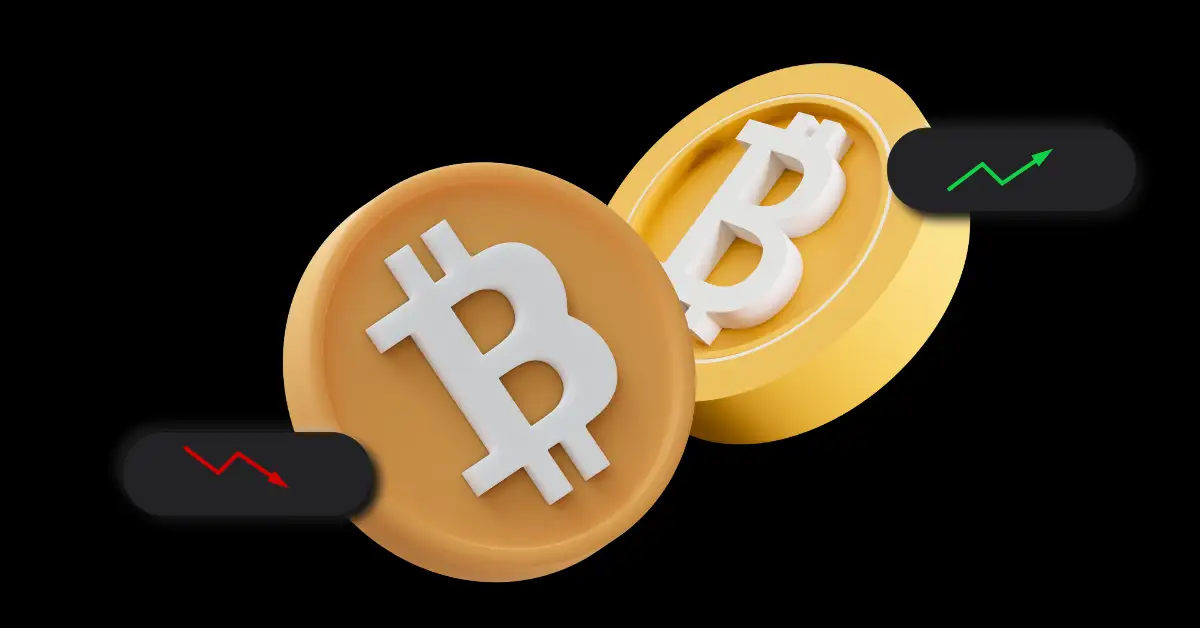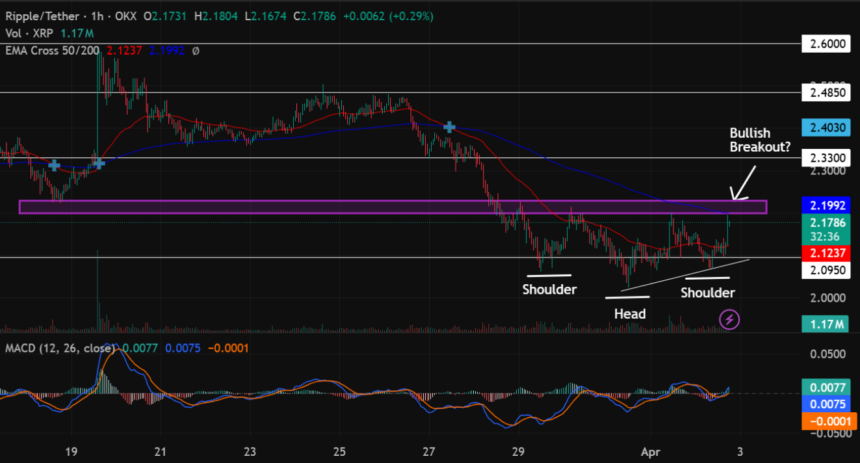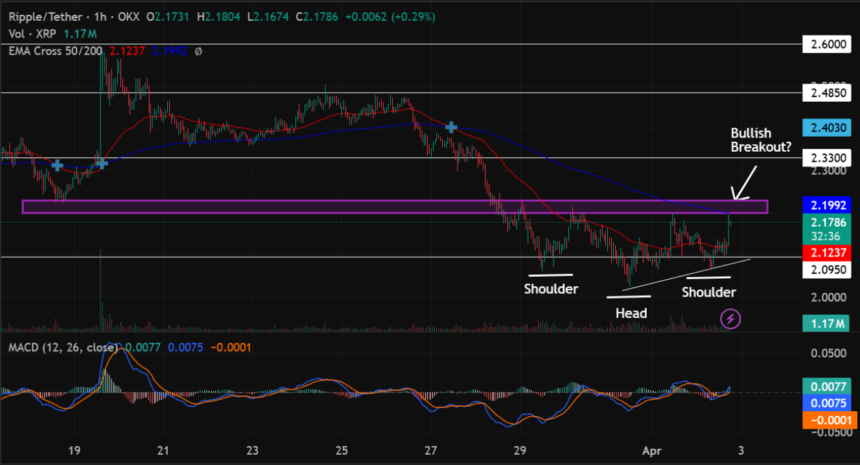News
Stay up-to-date on the most trending topics in crypto with our professional and in-depth news.
1Ethereum Sets Target at $4,800 After Holding $3,447 and $3,194 Zones2XRP Shows Potential for Breakout Near $3.21 Amid Mixed Market Signals3Bitcoin Eyes Potential Rally Beyond $120,000 After Recent Liquidity Grab, Analysts Suggest Higher Targets

Bitcoin’s estimated leverage ratio falls below short-term average as traders pull back after March spike
CryptoSlate·2025/04/03 04:27


Story (IP) Tops Daily Gainers With 5% Surge, Yet Weak Demand Signals Caution
Despite a 5% price surge, Story’s IP faces weak demand and declining volume, raising concerns about the sustainability of its rally and the potential for a price correction.
BeInCrypto·2025/04/03 01:30

Bitcoin Tops $86K on ‘Liberation Day’
Bitcoin.com·2025/04/02 23:00

Bitcoin ETFs Face Heavy Sell-Off With $158 Million Exit
Bitcoin.com·2025/04/02 23:00

Trump enacts 10% tariff on all imports, ramps up pressure on 60 countries
Cryptobriefing·2025/04/02 22:33

Trump’s Liberation Day Tariff Live: Impact on Crypto Market
Cryptotimes·2025/04/02 20:22

Trump’s Tariff Announcement To Push XRP Price Beyond $3?
Cryptotimes·2025/04/02 20:22

Bitcoin Nears $90K Breakout: Descending Triangle Signals Major Move
Cryptonewsland·2025/04/02 20:00

Cardano Price Prediction: Can ADA Price reach $1 After Market Consolidation?
Cryptoticker·2025/04/02 18:00
Flash
- 06:12Approximately $2.64 Billion Worth of ETH Queued to Exit Ethereum PoS Network as New Staking Demand DeclinesOn July 27, according to validatorqueue, a website tracking validator queues, the current Ethereum PoS network exit queue has increased to 694,000 ETH, with a recent peak of 744,000 ETH. On July 16, this number was only 1,920 ETH, and on July 15, there was no need to queue for exit at all. Based on current prices, the ETH exiting the PoS network is worth approximately $2.64 billion, and the withdrawal delay has been extended to 12 days and 1 hour. Meanwhile, after a recent surge, the demand for new validator staking has reached a turning point. On July 17, there were 435,000 ETH waiting to enter the network, but today the entry queue has dropped to 220,000 ETH, valued at about $836 million, with the current entry queue wait time at 3 days and 20 hours. Andy Cronk, co-founder of staking service provider Figment, previously stated: "When prices rise, people unstake and sell to lock in profits. We have observed that both retail and institutional participants follow this pattern through multiple cycles."
- 05:47LD Capital Founder: The Market Has Fully Entered a Prolonged Bull Run, and the Traditional Four-Year Cycle May No Longer ApplyAccording to Jinse Finance, LD Capital founder Yili Hua stated on social media, "The market has fully entered a prolonged bull run, and the traditional four-year cycle pattern may no longer apply. For the United States, stablecoins and blockchain represent the best opportunity for the global expansion of the US dollar. With crypto stocks on one hand and stablecoin yield strategies on the other, the market will continue to attract new users and capital. The hottest topic recently is the crypto stock model, which is indeed an innovative invention. The crypto market is still much smaller compared to the US stock market. As BTC and ETH succeed, mainstream coins like SUI, BNB, SOL, TON, and LTC will seize this opportunity to reach new heights, followed by smaller coins catching up. Those with professional research and information capabilities can capitalize on these opportunities. Lastly, I advise everyone not to short the market and to stay away from short-selling circles."
- 05:41Powell Faces Unprecedented Pressure Ahead of GDP and Employment Data ReleaseAccording to Jinse Finance, against a complex backdrop of mounting political pressure, shifting trade policies, and conflicting economic signals, Federal Reserve Chair Jerome Powell and his colleagues will convene for a policy meeting next week. This decision coincides with a rare data-heavy week— the U.S. government will successively release GDP figures, employment reports, and the Fed’s preferred core inflation indicator. While markets broadly expect the Fed to hold rates steady once again, this series of data releases could reshape the policy outlook. Economists predict that the annualized growth rate of U.S. GDP for the second quarter, to be announced next Wednesday, could reach 2.4% (a significant improvement from the 0.5% contraction in the first quarter), mainly due to a sharp narrowing of the trade deficit. The July nonfarm payroll report, to be released on Friday, is expected to confirm that businesses are becoming more cautious in hiring. After a surge in education sector employment boosted June’s figures, job gains this month are likely to slow, with the unemployment rate possibly edging up to 4.2%. The U.S. government’s June personal income and outlays report is expected to show that the Fed’s favored core inflation indicator accelerated slightly month-on-month, indicating that tariffs are gradually being passed on to consumers.